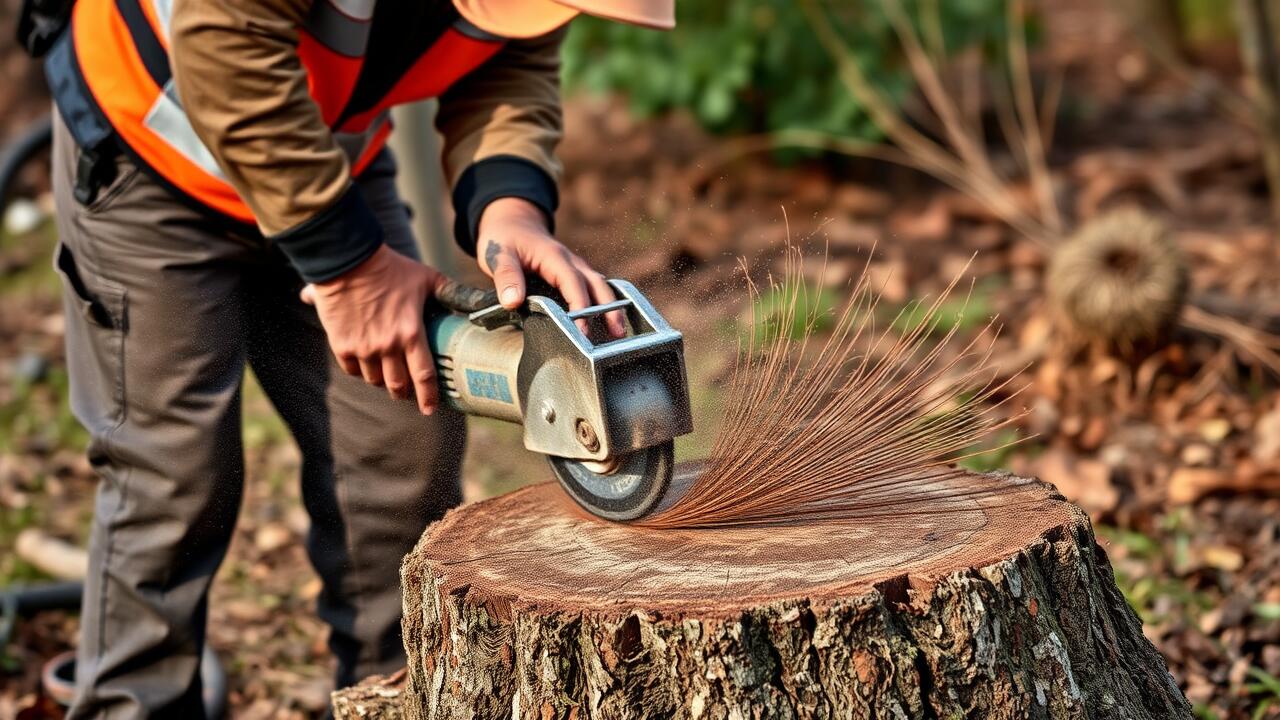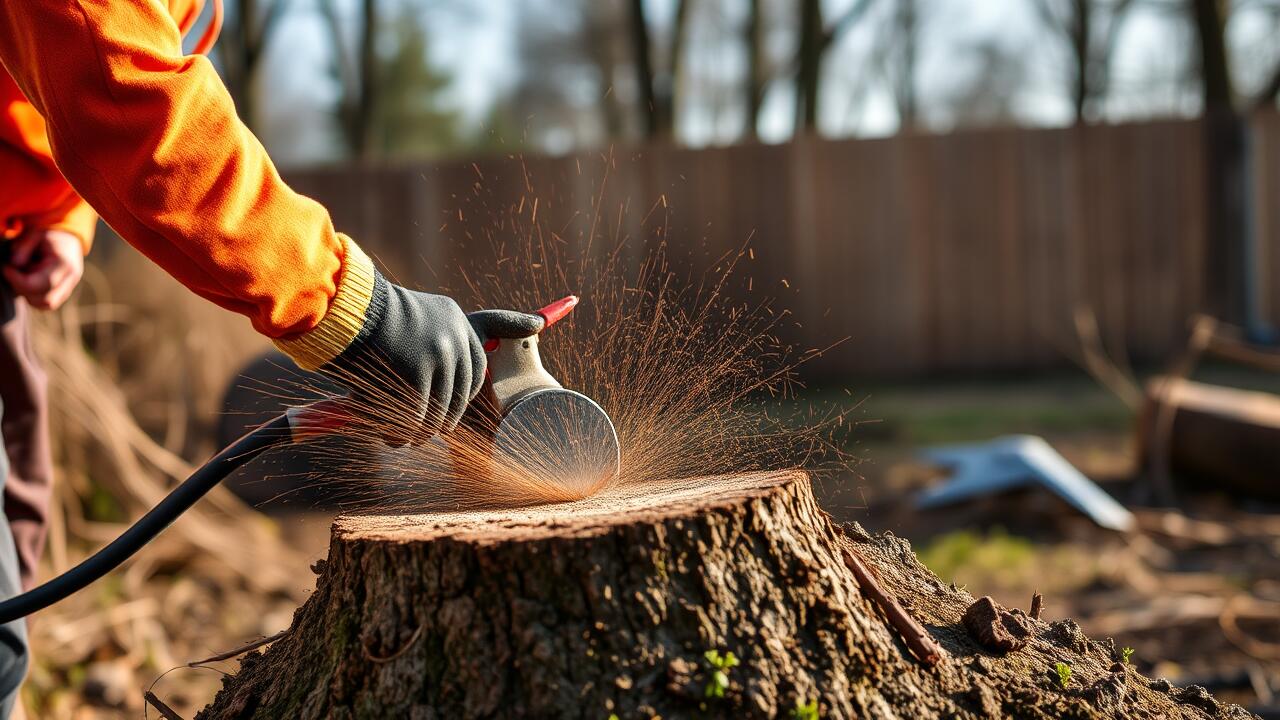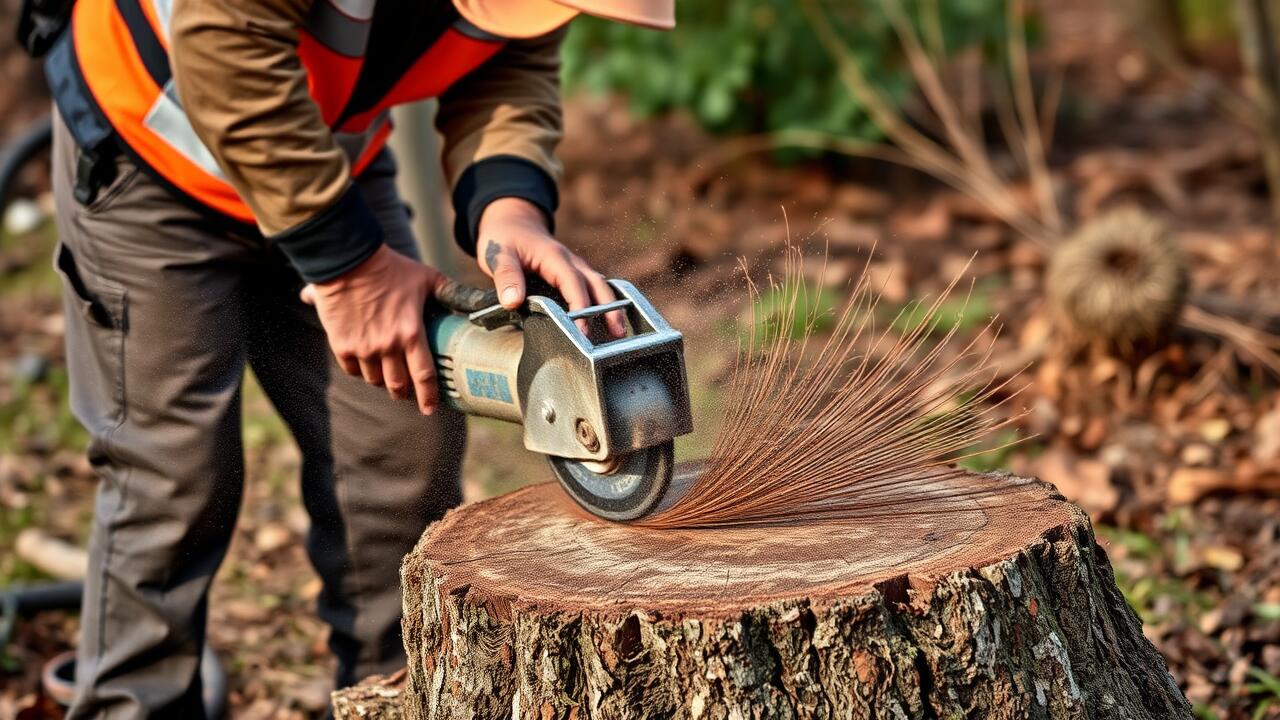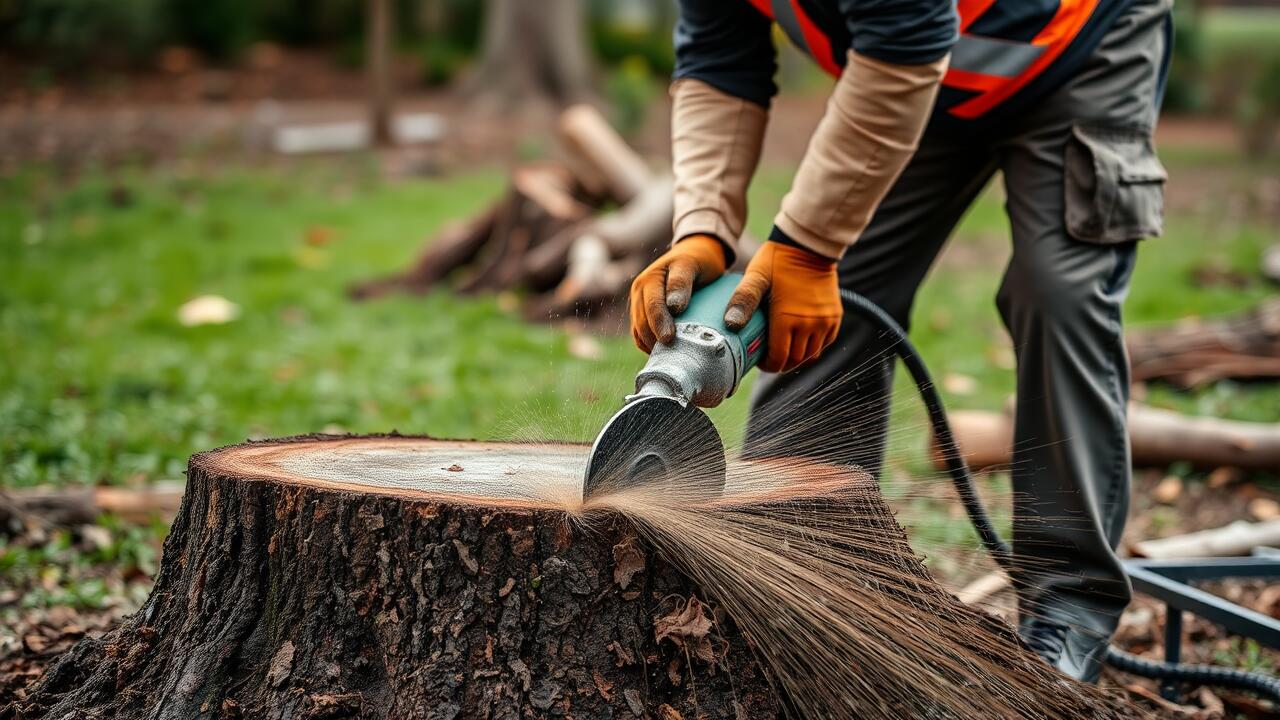
Environmental Impact Assessment
Stump removal and grinding each carry their own environmental implications. Grinding usually involves breaking down the stump into small wood chips, which can decompose naturally over time. This process can be less disruptive to the surrounding ecosystem. Additionally, the wood chips created can be used as mulch, contributing positively to soil health and moisture retention. In contrast, stump removal often requires heavy machinery that can compact soil and disturb existing plant life, potentially leading to negative environmental effects.
When considering options like Stump Grinding West End, Atlanta, one must assess not only the immediate impact but also the long-term effects on local flora and fauna. Grinding minimizes soil disturbance and helps maintain the area’s natural habitat. However, if removal involves uprooting and relocating a stump, the remaining impact on the environment can include altered drainage patterns and soil erosion. Balancing these factors is essential for making an informed decision about which method aligns best with environmental goals.
Eco-Friendliness of Grinding vs. Removal
Stump grinding is often considered more eco-friendly compared to complete stump removal. During the grinding process, chips and mulch are produced, which can be repurposed as natural ground cover or compost. The method minimizes soil disruption, preserving the surrounding ecosystem and maintaining soil health. This is particularly significant in urban areas like Old Fourth Ward, Atlanta, where green spaces are valuable and often limited.
On the other hand, removing a stump can lead to more environmental disturbances. Digging up a stump often involves extensive excavation, which can damage existing roots of nearby trees and plants. The extraction process may also require additional chemical treatments to prevent regrowth, posing potential risks to local wildlife and soil composition. For homeowners in places such as Old Fourth Ward, Atlanta, opting for stump grinding can represent a conscientious choice in preserving the environment while effectively managing landscaping needs.
Equipment and Labor Costs
When assessing the costs associated with stump grinding and removal, it is essential to consider the equipment and labor involved in each method. Stump grinding typically requires specialized machinery such as a stump grinder, which can be rented or purchased. The rental costs can vary based on the machine's size and capabilities. Additionally, labor costs will depend on whether you choose to tackle the task yourself or hire professionals. Hiring a professional service often comes with a higher price tag due to their expertise and efficiency in using the equipment.
On the other hand, stump removal can involve more labor-intensive techniques, including digging out the entire root system. This method may require tools like picks, shovels, and possibly even a backhoe for larger stumps. The labor costs can be significant, especially if the job takes longer than anticipated. Many residents in areas like Stump Grinding Virginia Highland, Atlanta opt for professional services, considering the efficiency they bring to the task. Both methods have their own financial implications, making it crucial to evaluate your specific needs and budget when deciding.
Tools Needed for Stump Grinding and Removal
When considering stump grinding or removal, the right tools play a crucial role in ensuring efficiency and safety. For stump grinding, a specialized stump grinder is essential. This machine features sharp blades designed to chip the stump down into mulch, making it easier to manage the remnants. Additional tools may include a chainsaw for cutting the stump as low as possible, protective gear like goggles and gloves, and shovels for clearing away the grinder's debris. In areas like Stump Grinding Midtown, Atlanta, having access to high-quality equipment is vital to handle the job effectively.
On the other hand, stump removal requires a different set of tools. Axes, digging bars, and root saws are common instruments for this labor-intensive process. The use of a backhoe or a mini-excavator may also be necessary for larger stumps. Manual labor is often a significant component of stump removal, requiring proper body mechanics and sometimes multiple workers. Whether you're leaning toward grinding or removal, the tools chosen can significantly impact both the cost and the overall outcome of the project.
DIY vs. Professional Services
Many homeowners consider whether to tackle stump grinding or removal as a DIY project or to hire professionals. DIY stump grinding requires various tools, like a chainsaw and a stump grinder, which can be rented but add to the initial costs. The process also demands a good deal of physical effort and knowledge about safety practices to avoid accidents. While taking on the task yourself may seem cost-effective, it can lead to unforeseen expenses, especially if you lack the experience needed to handle potential complications.
Hiring a professional service for stump grinding, such as Stump Grinding Midtown, Atlanta, often provides a more streamlined approach. Experts come equipped with specialized tools and possess the expertise to complete the job efficiently. This option typically comes with a higher upfront cost, but it can save time and reduce the risk of injury. Professionals can also manage waste disposal and ensure that the remaining area is cleaned up properly, adding value beyond just the grinding or removal itself.
Cost Implications of Hiring Experts
When considering professional services for stump removal, the cost can vary significantly based on several factors. The size of the stump plays a critical role, with larger stumps generally requiring more time, effort, and specialized equipment. Additionally, the complexity of the job, such as proximity to structures or underground utilities, can impact the overall expense. Homeowners in areas like Atlantic Station, Atlanta can expect to pay a premium due to the competitive market and varying service rates.
Hiring experts for stump grinding often includes additional costs such as site cleanup and disposal of debris. While the upfront investment may seem higher than a DIY approach, professionals typically come equipped with advanced machinery that can complete the task more efficiently. This not only saves time but may also reduce the risk of injury or damage to property, making it a worthwhile consideration for those unfamiliar with the process. Stump Grinding Atlantic Station, Atlanta offers a range of services tailored to meet different needs and budgets, reflecting the diverse options available to homeowners.
FAQS
What are the main differences between stump grinding and stump removal?
Stump grinding involves using a machine to grind the stump down to below ground level, leaving the roots in place, while stump removal entails completely extracting the stump and the roots from the ground.
Is stump grinding more environmentally friendly than stump removal?
Generally, yes. Stump grinding is considered more eco-friendly because it leaves the root system intact, which can decompose naturally over time, while removal can disturb the surrounding soil and ecosystem.
What factors affect the cost of stump grinding or removal?
Factors that influence cost include the size and type of the stump, the depth of the roots, accessibility to the area, and whether you choose DIY methods or hire professional services.
Can I grind a stump myself, or should I hire a professional?
You can grind a stump yourself if you have the proper tools and experience, but hiring a professional is often recommended for larger stumps or if you're unfamiliar with the equipment, as they can ensure safe and efficient work.
Are there any hidden costs associated with stump grinding or removal?
Potential hidden costs can include transporting equipment, dealing with debris removal, or addressing any landscaping repairs needed after the stump is removed or ground down. It's essential to discuss all potential costs with service providers upfront.



